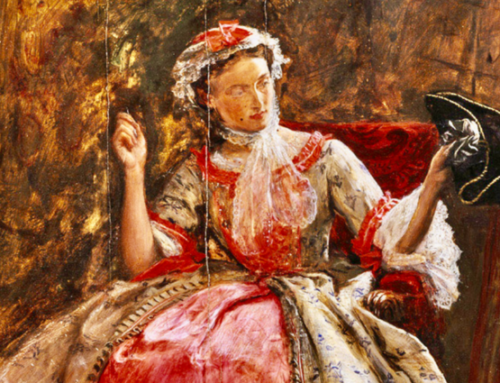 Reading Law: The Interpretation of Legal Texts
Reading Law: The Interpretation of Legal Texts
by Antonin Scalia and Bryan A. Garner.
These are dark days for American law. In June, Chief Justice John Roberts, in what was a stark betrayal of his oath to uphold the Constitution, upheld the Patient Protection and Affordable Care Act (the “ACA” or “Obamacare”) as a valid exercise of the Congressional taxing power, even though he acknowledged that that Act could not survive if it were justified (as the President and the Act’s Congressional proponents had justified it) under Congress’s power to regulate interstate commerce. By that lapse on his part, the Chief Justice apparently sought to avoid plunging the Court into the political thicket, as had happened with Bush v. Gore, and perhaps he succeeded in that, but he also succeeded in freeing the federal government from its Constitutional bounds as one of limited and enumerated powers. The work the Roosevelt Administration had begun in making the Federal Government the most important force in the lives of the citizens of this republic was completed by a Republican appointee to the bench. The reelection of President Obama, a man committed to appointing Supreme Court Justices for their qualities of empathy with the poor, powerless, and downtrodden of society rather than their qualities of adherence to the Constitution or to the rule of law, promises what may be generations of Supreme Court decisions altering orthodox understanding of our rights and responsibilities, and permitting redistribution of resources in ways previously unobtainable by statute or legal doctrine. One can be forgiven, perhaps, in the wake of the November election (when the party of governmental restraint and conservative judicial interpretation suffered dramatic losses), for believing that the rule of law was all but dead.
Thus, the new text by Antonin Scalia (our senior Associate Justice, and one of the two most reliable members of the conservative wing of the Court) and Bryan A. Garner (the nation’s leading legal lexicographer) arrives as something of a ray of light to dispel the gloom. This book, published by the leading law book publisher (mine, as well) is nothing less than a laudable and inspired leap backward, to the glory days of the republic and the common law. The authors perspective on the law in Reading Law: The Interpretation of Legal Texts, is that the “living constitution” is an oxymoron, if not an anathema, and that the only valid task of judges, when interpreting statutes of constitutions, is to give those legal documents the meaning that a contemporary reader of the measures would have understood. This is, essentially, the same view of law as taught by Blackstone at Oxford in the late eighteenth century, and by United States Supreme Court Justice Joseph Story, when he moonlighted as a law professor at Harvard in the 1830s, but it is hardly the prevailing view in our courts or the legal academy today. There, most judges and scholars believe it is the task of judges to interpret statutes and constitutions in order to promote their “spirit,” to take account of possible adverse consequences of interpretation, or to arrive at pragmatic and progressive social solutions to problems of discrimination and oppression that may not have been anticipated by legislators or the Constitution’s framers.
And yet, if our central creed as Americans, that we believe in a government of laws and not men, is to be implemented, surely Scalia and Garner get it right, and Roberts and Obama get it wrong. If the rule of law means anything, as Alexander Hamilton urged in the famous Federalist 78 (borrowing from Montesquieu), it means that the power of legislating must be separated from the power of judging. The task of a judge is to interpret, not to make, law. It is fashionable today to claim that this view is naive, that words have ineluctably elusive meanings, and that therefore judging is a creative activity, offering license to do justice rather than simply mechanically to apply ancient understandings. Scalia and Garner—God bless them—will have none of this, powerfully demonstrating, with the putting forward of fifty-seven maxims or canons of construction (many illuminated by the Latin) and thirteen false notions (including the “living constitution” idea) that the rule of law, while battered, might still survive.
This book ought to be given to every entering American law student, and would introduce him or her not only to a series of sensible and common-sense appraisals of the craft of the lawyer and judge, but to the best in judicial and legal scholarship over several centuries of common law and American development. The copious footnotes, appendices, and bibliography provide nothing less than a brilliant lifetime legal reading plan for our benighted age, with citations to the great legal figures of the past, and an amazing number of contemporary scholars and judges, not all of whom the authors praise, but to whom, I believe, they have been reasonably fair. The book requires a bit of effort on the part of the reader—this is a compendium of legal rules, and a gloss on what many important jurists have said, and, perhaps, will not be too everyone’s taste. It has already been the subject of a blistering book review in the New Republic, by the esteemed Judge Richard Posner, probably the most important legal scholar of the late twentieth and early twenty-first century. Posner is the nation’s leading practitioner of law and economics, a legal philosophy notable for its assumption that judges should regard themselves as tasked with the job of maximizing the efficiency of legal rules, and thus, ultimately, the maximization of wealth for society. It could probably be said, as well, that Posner is the nation’s leading legal pragmatist, and his jurisprudential studies have been notable for following his mentor, Oliver Wendell Holmes, Jr., in concluding that what judges do at any given time pretty nearly corresponds to what society then regards as convenient.
Holmes was the inspiration as well for the school of “legal realism” that emerged in the nineteen-thirties and laid the groundwork for the wholesale abandonment of traditional legal doctrines that began with the New Deal Court, that continued with the Warren Court, and that culminated in the infamous Roe v. Wade decision of 1973, which somehow found in penumbras and emanations from particular Constitutional provisions and in an attenuated reading of the Fourteenth Amendment’s guarantee that no state could abridge life or liberty without due process of law, a right for women to terminate pregnancies before fetal viability. Scalia has always maintained that Roe v. Wade was the height of judicial irresponsibility, although I would award that honor to Justice Roberts’s opinion in the Obamacare case. Scalia wisely dissented in that case, believing that Congress had gone too far, and believing that it was the job of the Court to preserve the rule of law, and enforce the original understanding of the Constitution. His book with Bryan Garner is a worthy attempt to ensure that future jurists may have the tools to succeed where the current Court has failed.
Books on the topics related to this essay may be found in The Imaginative Conservative Bookstore. Reprinted with the gracious permission of The University Bookman.







The “original meaning of the Constitution” is no good as an absolute standard. Why are we to be bound by the intentions of Masons, Deists, and all around anti-Catholics whose understanding of the nature of politics and law was revolutionary in the worst sense, and who sought above all to keep the political and spiritual power of the Catholic Church off American shores? It is typical of American conservatism to choose an older yet still arbitrary standard that seems better than today’s and try to hold back the fort with it. To see why this simply can’t work, one must read Chris Ferrara’s “Liberty: The God that Failed.”
Yes yes and yes Thaddeus. Thank you.